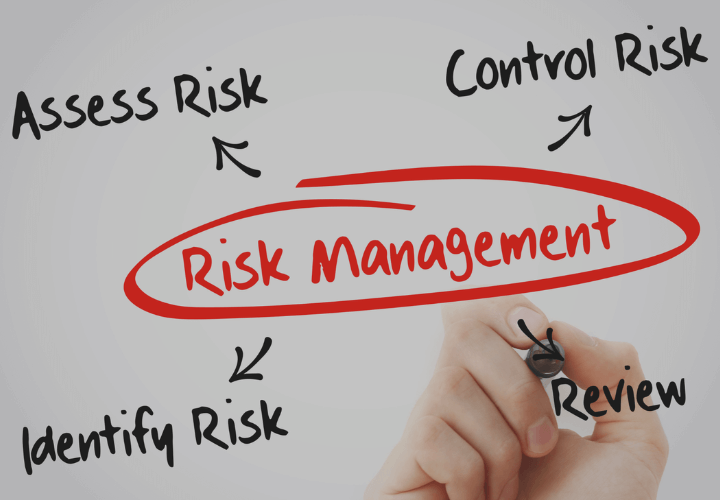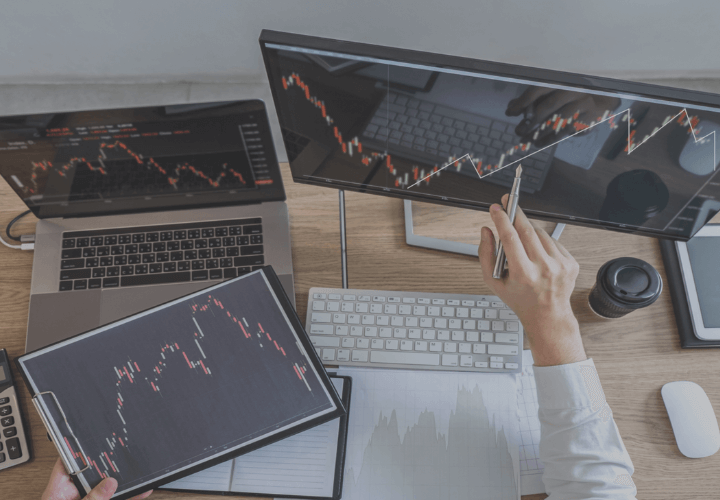
Importance of Risk Management & VAR in Trading
Trading is one of the most rewarding professions in the financial industry, but it can also be one of the riskiest. Trading involves buying and selling financial instruments, such as stocks, bonds, and currencies, with the aim of making a profit. However, the market is unpredictable, and traders can easily lose money if they don't manage risk properly. This is why risk management is crucial in trading. In this article, we'll discuss the importance of risk management in trading and the concept of Value at Risk (VAR) and its significance in trading.
Importance of Risk Management in Trading
Risk management is the process of identifying, assessing, and controlling risks that can affect a trader's profitability. It is essential to have a risk management strategy in place before entering any trade. The goal of risk management is to minimize losses and maximize profits. Here are some reasons why risk management is crucial in trading:
Protects capital:
Reduces emotional stress: Trading can be an emotional rollercoaster, and losses can cause emotional distress. Proper risk management can help reduce emotional stress by minimizing losses and allowing traders to stick to their trading plan.
Increases discipline: Risk management requires traders to follow a set of rules and guidelines. This process increases discipline and reduces impulsive trading decisions.
Improves performance: Proper risk management can improve a trader's overall performance by limiting losses and allowing them to focus on their strengths.
Provides a competitive advantage: Traders who have a risk management strategy in place have a competitive advantage over those who don't. They are more disciplined and can make better decisions under pressure.
What is Value at Risk (VAR)?
Value at Risk (VAR) is a risk management tool that measures the potential loss of an investment over a specified period. It is a statistical measure that estimates the maximum loss that an investment could experience with a given level of confidence. VAR is used by traders and financial institutions to manage risk in their portfolios.
VAR can be calculated in several ways, but the most common method is the Monte Carlo simulation. This simulation uses historical data to model potential outcomes and estimate the probability of a loss exceeding a specified threshold. A result is a single number that represents the maximum loss that an investment could experience with a given level of confidence.
VAR is usually expressed as a percentage of the investment amount. For example, a VAR of 5% means that there is a 5% chance that the investment could experience a loss that exceeds the calculated VAR. VAR can be calculated for different time horizons, such as one day, one week, or one month.
The Importance of VAR in Trading
VAR is a crucial risk management technique in trading since it aids in the identification and mitigation of potential losses for both traders and financial institutions. Here are some reasons why VAR is important in trading:
Identifies potential losses: VAR helps traders identify the potential losses that they could experience over a specific time period. This information is essential in developing a risk management strategy.
Measures risk: VAR measures the risk of an investment and provides traders with a single number that represents the maximum loss that they could experience with a given level of confidence.
Helps with portfolio diversification: VAR can be used to measure the risk of a portfolio of investments. Traders can use VAR to identify investments that are highly correlated and diversify their portfolios to reduce the overall risk.
Determines position sizing: VAR can be used to determine the appropriate position size for a trade. Traders can use VAR to calculate the maximum amount that they should risk on a trade to ensure that they do not exceed their risk tolerance.
Helps in stress testing: VAR can be used to stress test a trading strategy. Traders can use historical data to simulate different market scenarios and estimate the potential losses that their strategy could experience.
Aids in regulatory compliance: Many financial institutions are required by regulatory bodies to maintain a minimum level of VAR. VAR can help these institutions comply with regulatory requirements and avoid penalties.
VAR Limitations
While VAR is an essential risk management tool, it has some limitations that traders should be aware of. Here are some of the limitations of VAR:
Assumes normal market conditions: VAR assumes that market conditions will remain stable and predictable. However, the market is volatile and unpredictable, and extreme events can occur.
Limited predictive ability: VAR is based on historical data and may not accurately predict the potential losses that investment could experience in the future.
Ignores tail risks: VAR is only concerned with the maximum loss that an investment could experience with a given level of confidence. It does not consider the likelihood of extreme events, also known as tail risks.
Requires accurate data: VAR requires accurate and reliable data to calculate the potential losses accurately. If the data is flawed or inaccurate, the VAR calculation will be incorrect.
Assumes that risks are uncorrelated: VAR assumes that risks are uncorrelated, meaning that the losses of one investment do not affect the losses of another investment. However, during times of market stress, risks can become correlated, leading to higher losses than predicted by VAR.
Conclusion
Risk management is crucial in trading, and traders must have a risk management strategy in place before entering any trade. The goal of risk management is to minimize losses and maximize profits, and one essential tool for managing risk is Value at Risk (VAR). With a certain level of confidence, the maximum loss that an investment could sustain is estimated by the statistical metric known as VAR. VAR is essential in trading because it helps traders identify potential losses, measure risk, determine position sizing, and comply with regulatory requirements. However, VAR has some limitations, and traders should be aware of these limitations when using VAR to manage risk. By understanding the importance of risk management and using tools like VAR, traders can improve their performance and minimize losses in the unpredictable and volatile world of trading.
Comments (0)
Categories
Recent posts


Importance and Ways to perfect Elliot ...
20 Feb 2023
All about "Mutual Funds"
20 Feb 2023
Fibonacci in Trading & Tools
20 Feb 2023

.jpeg)